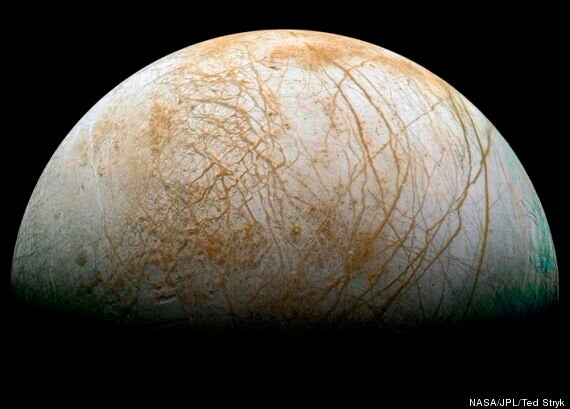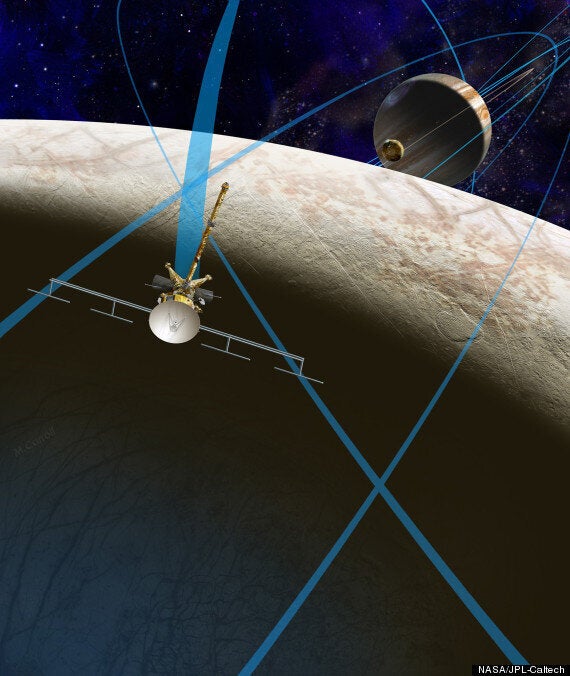Of all the bits of solid stuff floating around our solar system the one that holds the most promise of harbouring life is perhaps the icy moon of Jupiter, Europa.
No wonder then that Nasa are incredibly keen to get close up and have a look at what lies beneath its frozen surface.
The space agency has announced it has allocated $15m (£9m) to fund the pre-formulation" stage of a mission to Europa by 2025.

The icy surface of Europa under which are believed to be vast oceans
Nasa chief financial officer Beth Robinson, said: "Europa is a very challenging mission operating in a really high radiation environment, and there's lots to do to prepare for it.
"We're looking for a launch some time in the mid-2020s."
At this stage the exact concept of the mission is still open to debate but a frontrunner idea is the Europa Clipper.

Artists impression of the Europa Clipper
This mission would place a spacecraft in orbit around Jupiter in order to perform a detailed investigation of the moon by performing repeated flybys.
From Nasa:
10 Need-To-Know Things About Europa:
- If the sun were as tall as a typical front door, Earth would be the size of a nickel and Europa would be the size of the dome on the back of the nickel.
- Europa is a moon that orbits the planet Jupiter. Jupiter is the fifth planet from the sun at a distance of about 778 million km (484 million miles) or 5.2 AU.
- One day on Europa (the time it takes for Europa to rotate or spin once) takes about 3.5 Earth days. The length of Europa's day is the same as the amount of time it takes Europa to orbit Jupiter. Jupiter makes a complete orbit around the sun (one Jupiter year) in about 12 Earth years (4,333 Earth days).
- Like many other moons (including Earth's moon), Europa is locked by gravity to its planet so that the same side always faces toward Jupiter.
- Europa's surface is mostly solid water ice. It is extremely smooth and crisscrossed by fractures.
- Europa has an extremely thin oxygen atmosphere -- far too thin to breathe.
- Europa does not have rings.
- Europa has been visited by eight spacecraft, which have performed flybys. Galileo is the only mission to make repeated visits to Europa.
- With abundant liquid water, and energy and chemistry provided by tidal heating, Europa could be the best place in the solar system to look for present day life beyond Earth.
- If Europa's ocean is proven to exist, it would possess more than twice as much water as Earth.